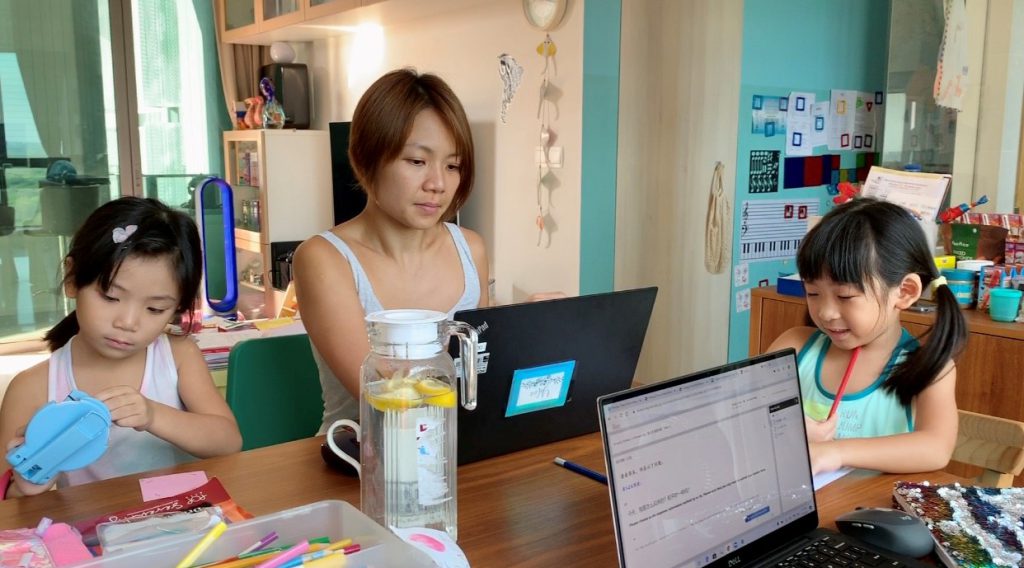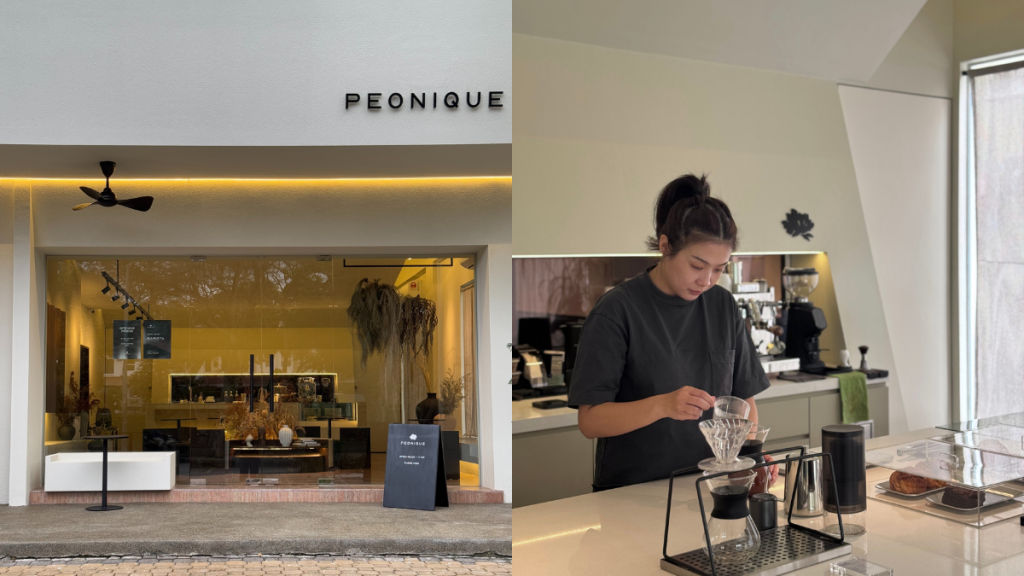Cathie Chew, a 50-year-old mum to three kids, had to put her career of over 24 years as a financial consultant on hold six years ago, when she was hit by the devastating news of her husband’s hearing loss after he consumed raw fish.
She had become his primary caregiver.
Once her husband’s condition became more stable, Cathie switched career paths and released four books on her journey of caregiving. Her new job as a self-employed author gave her the flexibility of choosing her working hours and place while caring for her husband.
And then there is Sarah* (names have been changed for privacy reasons), a 29-year-old mum to a five-year-old, who quit her job after her child was born. She found it hard to take care of her child while working a nine-to-five job.
She returned to the workforce earlier this year after a whole year of job hunting, and now holds a role that allows her to work remotely.
“I’ve applied to countless organisations and faced countless rejections, all because of my career gap,” she said.
The experiences of these women are testament to President’s Halimah’s speech last week at a dialogue with NTUC Women’s Committee Leaders at the Istana, as reported by The Straits Times.
Once [women leave] the workforce, after years of being out of work, it is extremely difficult to try and retrain them and get them in tune with a workforce that has changed rapidly. We need to look at ways of how to help [women] remain in the workforce, and this is where flexible work practices are important.
– President Halimah Yacob
Flexible work arrangements have created many opportunities for caregivers, which would have never been possible if people were forced to work from an office.
Gender equality in Singapore

Singapore prides itself to be a gender inclusive country, but is that really the case?
Singapore’s labour force participation of women was at 64.2 per cent in 2021, higher than the global average of just over 50 per cent, and its share of women holding C-suite roles in financial institutions in 2021 was at 20.8 per cent, beating the Asian average of 14.2 per cent.
Additionally, Article 12 (1) of the Constitution of Singapore, which states that “all persons are equal before the law and entitled to equal protection under the law”, ensures that both men and women have equal status.
Although this may indicate that Singapore’s perception towards gender equality is generally progressive, a patriarchal mindset still prevails among Singaporeans, according to a study by Ipsos last year.
Gender-defined roles still exist in Singaporean households, where women generally take up roles such as cleaning, cooking and caregiving, in contrast to men who generally take up physically intensive and roles that require technical knowledge such as repairs and management of tech devices.
Meanwhile, responsibilities taken up by men are less frequent in nature.

With the brunt of daily chores sitting on women’s shoulders, only 54 per cent of women feel happy with their share of household and caring responsibilities, as compared to 75 per cent of men. This gap is wider among couples with children, where only 47 per cent of mothers are happy with their workload, as compared to 78 per cent of fathers.
“I used to be very exhausted, and generally unsatisfied with my share of household responsibilities. I faced pressure from both my mum, and my husband’s mum to take up most of the household chores,” said Amanda*, a 35-year-old mum of two kids.
“In the end, I took a career break. I couldn’t handle the stress from cooking, cleaning, and looking after both of my young kids.” It has been six years since she quit her job, and at that time, she felt like she had to choose between her family or her job.
Amanda* is just one of many other women who have quit the workforce due to household and caregiving responsibilities. In fact, the labour force participation rate of married women was reported to be almost 20 per cent lower than married men last year.
A hybrid work arrangement just doesn’t cut it

COVID-19 was a turning point for the workforce, and has forced people to pivot their conventional work style to one that’s laced with digital tech.
Now that the dust has settled and the way of life has almost returned to the pre-pandemic state, most work places still adopt a hybrid arrangement. Employees are also not very keen to return to the office either, given the better work-life balance and control they have from working from home.
The thing is, hybrid working only allows for the flexibility of place. Employees work partly at home and partly at an office, during standard working hours.
More often than not, employers also dictate the days where employees can work outside of the office.
A hybrid work arrangement, while designed to give employees a means to create greater efficiency and satisfaction, also blurs the line between working and caregiving, and places more weight on the shoulders of caregivers.
In fact, National University Health System’s (NUHS) Mind Science Centre’s mental health resilience survey on COVID-19 found that 61 per cent of those working from home reported feeling stressed, and women are more likely to report being stressed at work and at home.
“It’s like being a housewife while still having to work a nine-to-six corporate job,” said a user on Reddit.
She added that she is also the designated person to handle deliveries, and to be around during home upkeep services as it was more convenient and cheaper. “If there’s a schedule clash, it’s my problem and only my problem to work it out.”
The flexibility of time and place
In contrast, a flexible working arrangement offers more inclusivity.
“Flexi-work arrangements allow [caregivers] the flexibility of time and place. Flexibility at work is usually offered by allowing an employee more control over his/ her time. So by allowing a caregiver that ability to determine when she wants to work, it can help very much,” said Sher-Li Torrey, founder of Mums@Work, a career portal that provides support for women who want to strike a balance between being a mum and working.
Ever since Cathie started working from home, she got to plan her schedule around her caregiving duties, be it accompanying her husband to the hospital, or running errands for him.
“It was important for me to set my boundaries — I block out my calendar and have meetings with my clients only when I can afford to,” she said.
Cathie’s husband was recently diagnosed with rectal cancer, so she’s now taking on the active role as her husband’s caregiver. She’s thankful for the ability to work from anywhere and anytime now, which allows her to bring in a steady stream of income while caring for him.
“When I accompanied my husband for his surgery, I was working [and] brought my laptop over to the hospital,” she recounted.
Meanwhile, Amanda* rejoined the workforce recently, and now works on a flexible arrangement where she is given the freedom to choose where and when she works, as long as she gets her work done.
“I can choose what time I start and end work — it makes it easier as I can get my kids ready for school, and prepare food for them.”
A one-size-fix-all solution
That being said, flexible work arrangements is not a one-size-fix-all solution to caregivers.
It’s important to identify a caregiver’s needs before a flexible work arrangement is offered. These needs differ based on the group of people they care for, which could be children, the elderly, or unwell family members.
– Sher-Li, founder of Mums@Work
Some caregivers may need to provide the people they care for with companionship, while some need to provide them with transportation to the hospital, or get their groceries, among others. Hence, the needs of caregivers are purely situational, and a flexi-work arrangement needs to take their needs into account.
For example, working mothers felt the heat of working, while taking care of young kids during the pandemic.
“In general, the younger the kids, the harder mothers will find a work-from-home arrangement. The presence of the kids who need their attention makes being on calls very challenging,” said Sher-Li.
In situations such as this, a flexi-work arrangement may allow for mothers to delegate how they may remain contactable and responsive to her team and customers.
Additionally, while the flexibility of time and place can allow a caregiver to plan around his/her duties, a caregiver’s workstyle is an important determinant of the success of the flexi-work arrangement.
“In general, the more the employee is able to self-organise, the better they tend to be as a flexi-worker,” explained Sher-Li.
Caregivers tend to get overwhelmed when they have an inclusive work style, where they don’t delegate specific times when work starts and ends, especially when they have to look after kids and work at the same time. They end up burning the candle on both ends without a well-planned schedule.
Rachel*, a 39-year-old mum to a 12-year-old, was finding it hard to balance parenting and work the last three years during the pandemic.
“My [son] is usually very hyperactive. During circuit breaker, when he had home-based learning, I had a hard time trying to multi-task everything at the same time, while trying not to lose my temper.”
However, a few months into the circuit breaker, she created a schedule for both her and her son, on top of a dedicated learning space and work space for them. She also got her husband to help out during the second half of the day to make things manageable for her family.
Creating an inclusive work place

While it is important for workplaces to create a more inclusive environment with flexi-work arrangements, sometimes the nature of a job just does not allow for it.
For example, jobs that are a 100 per cent client facing and require fixed work hours such as a customer service officer at a call centre may not be viable for flexi-work arrangements, explained Sher-Li.
Additionally, workplaces must ensure that the flexi-work arrangement is offered to all of its employees equally.
“[Mums@Work] had cases where colleagues who had to carry out full-time roles did not like that mothers had special work arrangements. They felt as if it was a biased benefit for “being a mother”, ultimately resulting in intra-team unhappiness,” said Sher-Li.
Featured Image Credit: gov.sg
Also read: Why S’pore firms should not force workers to return to office and continue adopting flexi-work










